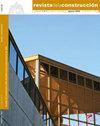硅灰和煤矸石废料增强偏高岭土聚合物的长期耐硫酸和盐酸性能
IF 1.4
4区 工程技术
引用次数: 6
摘要
在本文中,将硅灰(SF)、矿渣(S)和硅藻土废料(C)添加到偏高岭土(MK)基地质聚合物复合材料中,并将其暴露于10%(体积)的盐酸(HCl)和硫酸(H2SO4)溶液中长达12个月。地质聚合物复合材料在溶液中3、6和12个月时的重量损失、抗压强度和弯曲强度进行了检查。此外,还进行了扫描电子显微镜(SEM)、微型计算机断层扫描(Micro-CT)、傅立叶变换红外光谱(FTIR)和X射线衍射(XRD)分析,以检查酸侵蚀前后的微观结构。当地质聚合物砂浆受到硫酸和盐酸侵蚀时,弯曲强度和抗压强度显著降低。这种情况的主要原因是当暴露于硫酸和盐酸时,氧铝桥(-Al-Si-O)的劣化。氧-铝桥(-Al-Si-O)是地质聚合物基体中的主要因素,在巩固凝胶和增强基体组分之间形成的结合方面发挥着重要作用。尽管如此,地质聚合物砂浆样品仍保持铝硅酸盐结构。与盐酸相比,硫酸是一种更强的溶液,导致压缩强度和弯曲强度损失更大。本文章由计算机程序翻译,如有差异,请以英文原文为准。
Long-term sulfuric and hydrochloric acid resistance of silica fume and colemanite waste reinforced metakaolin-based geopolymers
For this paper, silica fume (SF), slag (S), and colemanite waste (C) were added to metakaolin (MK)-based geopolymer composites and exposed to 10% (by volume) hydrochloric acid (HCl) and sulfuric acid (H2SO4) solutions for up to 12 months. Geopolymer composites were examined in terms of weight loss, compressive strength, and flexural strength at 3, 6, and 12 months in solutions. Furthermore, Scanning Electron Microscopy (SEM), Micro-computed Tomography (micro-CT), Fourier Transform Infrared Spectroscopy (FTIR), and X-ray Diffraction (XRD) analyses were carried out to examine the microstructure before and after acid attacks. An important decrease in flexural and compressive strengths was seen when geopolymer mortars were subjected to sulfuric and hydrochloric acid attacks. The main cause of this situation is the deterioration of the oxy-aluminum bridge (-Al-Si-O) when exposed to sulfuric and hydrochloric acid. The oxy-aluminum bridge (-Al-Si-O), the primary factor in the geopolymer matrix, plays a significant role in consolidating the gel and enhancing the bond formed between the matrix components. Despite this, geopolymer mortar samples maintain the aluminosilicate structure. Compared to hydrochloric acid, sulfuric acid is a stronger solution, resulting in a greater loss of compressive and flexural strengths.
求助全文
通过发布文献求助,成功后即可免费获取论文全文。
去求助
来源期刊

Revista de la Construccion
工程技术-工程:土木
CiteScore
2.30
自引率
21.40%
发文量
0
期刊介绍:
The Journal of Construction is aimed at professionals, constructors, academics, researchers, companies, architects, engineers, and anyone who wishes to expand and update their knowledge about construction. We therefore invite all researchers, academics, and professionals to send their contributions for assessment and possible publication in this journal. The publications are free of publication charges.
OBJECTIVES
The objectives of the Journal of Construction are:
1. To disseminate new knowledge in all areas related to construction (Building, Civil Works, Materials, Business, Education, etc.).
2. To provide professionals in the area with material for discussion to refresh and update their knowledge.
3. To disseminate new applied technologies in construction nationally and internationally.
4. To provide national and foreign academics with an internationally endorsed medium in which to share their knowledge and debate the topics raised.
 求助内容:
求助内容: 应助结果提醒方式:
应助结果提醒方式:


